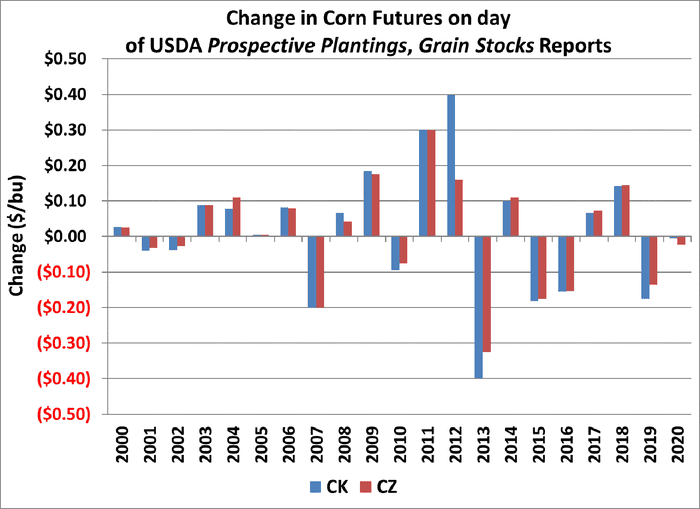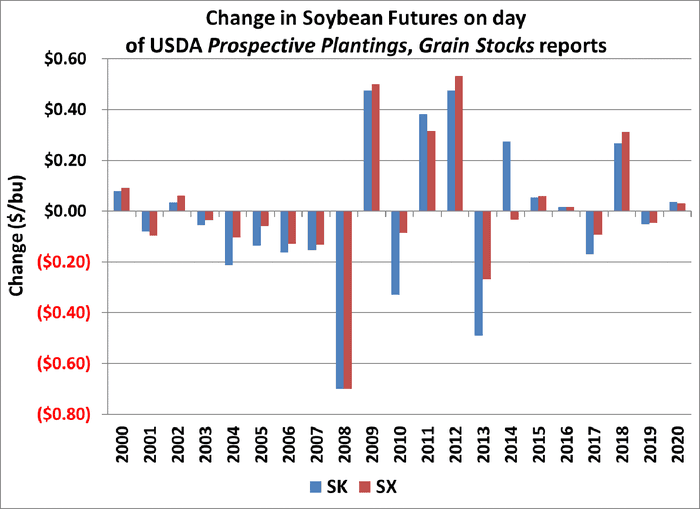
Two eagerly anticipated reports from USDA will be released on March 31: Prospective Plantings and Grain Stocks.
History shows that major changes in corn and soybean futures prices result from these March USDA reports. To illustrate those trends, the charts below quantify the change in old-crop May corn and soybean futures (represented by “CK” and “SK”) and new-crop December corn and November soybean futures (“CZ” and “SX”) on the day the report was released compared to the settlement prices on the previous day. For example, in 2019 the price of December 2019 corn futures (i.e. “CZ”) closed $0.13 ½ lower on March 29—the day the reports were released.


Three key points
A lot can be extrapolated from this data, but we would like to focus on three key points. First, notice there is no trend in the changes from one year to the next. For example, old-crop corn was up $0.10 in 2014 but down $0.18 ¼ in 2015. Next, while the change for old-crop and new-crop prices for a particular crop is usually in the same direction for a given year, the direction of corn and soybeans can be different. An example of this was seen in 2016 where corn futures were sharply lower but soybeans posted slight gains.
Finally, the magnitude of the changes generally increased in recent years, underscoring the financial impact.
We have witnessed an incredible run up in prices in the past seven months based on various fundamentals. Sometimes we anticipate the causes of potential volatility, such as USDA reports, and other times it can blind side the market as well. Increasing demand, shrinking carry-outs, revisions to the U.S. balance sheet, and adverse weather in the Southern hemisphere are among some of the key pieces of news price has had to digest of late.
While any of the above can still impact price, we are now heading into the time of year where U.S. production will soon become a major focus. That begins on March 31st with the prospective acreage report. How accurate is the data collected as of March 1st? It is hard to say but the market will see it as a starting point which can and will be adjusted as we move forward.
We also need to remember all news, bearish or bullish, does have a shelf life and eventually runs its course on price impact. Price prediction is impossible, but a disciplined risk management program can help manage increased price volatility regardless of market direction.
As always, it is important to work with an adviser who is well prepared to help develop and implement a customized strategy for your operation.
Advance Trading
Contact ATI at
800-664-2321
The risk of trading futures and options can be substantial. All information, publications, and material used and distributed by Advance Trading Inc. shall be construed as a solicitation. ATI does not maintain an independent research department as defined in CFTC Regulation 1.71. Information obtained from third-party sources is believed to be reliable, but its accuracy is not guaranteed by Advance Trading Inc. Past performance is not necessarily indicative of future results.
The opinions of the author are not necessarily those of Farm Futures or Farm Progress.
About the Author(s)
You May Also Like








